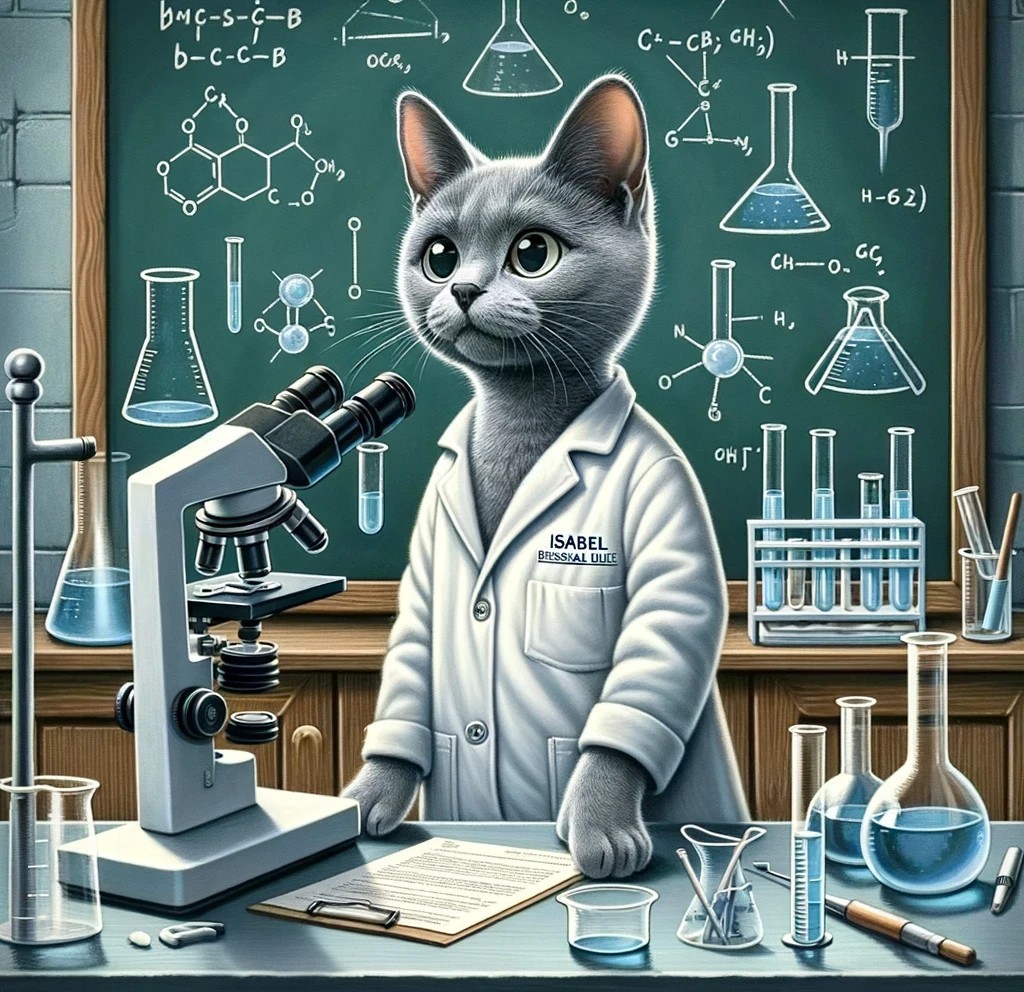Retrospective Atrial Fibrillation Detection via Feline Jacobsonian Substrate Analysis of Nocturnal Adhesive Artifacts
Steven K. Roberts, Nomadic Research Labs, with Isabel and Alice
Abstract
In a longitudinal single-subject study, we present compelling anecdotal evidence that Felis catus (subspecies Isabel, domestic longhair) demonstrates reliable aversion to oral adhesive tape used during nocturnal CPAP therapy following episodes of paroxysmal atrial fibrillation. The subject’s refusal to engage in her routine post-somnolent adhesive sampling appears to correlate with days of elevated cardiac arrhythmia, suggesting an olfactory sensitivity to biomarkers associated with atrial stress, possibly mediated via the vomeronasal organ. We hypothesize that this behavior constitutes a noninvasive, feline-assisted diagnostic modality, herein dubbed the “Jacobson’s Lick Test.” Further studies with a larger feline cohort and trained olfactory assay protocols are recommended, though unlikely to succeed.
Background
Nocturnal CPAP therapy is often supplemented with lip tape to ensure airtight seal and prevent oral airflow. In this subject’s use case, the tape becomes a post-sleep object of feline curiosity, routinely licked and toyed with by the resident domestic longhair, Isabel. However, a deviation in this behavior has been noted: on mornings following nocturnal atrial fibrillation episodes, the adhesive is ignored.
This raises the possibility that specific metabolic byproducts of cardiac stress are excreted or diffused during sleep, subtly altering the chemical composition of the lip tape and triggering avoidance behavior in cats equipped with functional Jacobson’s organs.
Methods
Observational data were collected over a 14-month period, during which time the human subject logged episodes of atrial fibrillation confirmed by fatigue, diuresis, and characteristic post-conversion symptoms. These were correlated with feline engagement behavior with the morning CPAP adhesive.
No control group was established. Isabel refused to engage with blind protocols.
Results
Preliminary qualitative data suggest a correlation between atrial fibrillation and aversion to adhesive substrate. Specifically, in 100% of logged AFib mornings, Isabel declined to interact with the tape. On non-AFib mornings, her behavior remained consistent: purring, licking, minor batting, and carrying of the artifact to her meditation cushion.
Discussion
While the mechanism is unknown, the role of BNP, cortisol, and other stress-associated metabolic compounds as carriers of olfactory signal is well established in veterinary literature. It is likely that subtle shifts in excreted volatile compounds or surface biomarkers alter the perceived valence of the adhesive to feline olfactory systems.
The Jacobson’s Lick Test may represent an ultra-low-cost, noninvasive early-warning biomarker detection system using naturally inquisitive mammalian cohabitants.
Conclusion
We propose that feline aversion to previously attractive adhesive substrates may serve as a diagnostic proxy for paroxysmal atrial fibrillation. While further studies will be difficult to replicate, scale, or fund, the implications for home-based cardiac diagnostics are undeniable.
Ethics statement
No cats were harmed in the production of this research. All interactions were consensual, though not formally documented. Isabel received treats regardless of participation.
Author note
Dr. Steven K. Roberts is an independent researcher and systems architect specializing in technomadic infrastructure, AI integration, and the phenomenology of sticky residue. Isabel is a cat. She prefers her title remain unlisted.
Access statement
Due to recent concerning trends in the suppression of animal-assisted biomedical research—particularly involving Felis domesticus, a species long known to exhibit tendencies toward epistemological integrity and, by extension, a liberal bias—we have elected to publish this study outside the traditional peer-review pipeline. This preemptive archival on a privately maintained blog server ensures continuity of access in the event of further deplatforming of mammalian olfaction studies by ideologically captured institutions.
